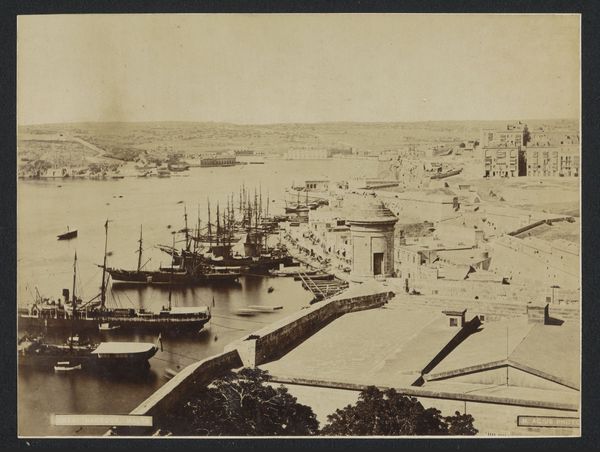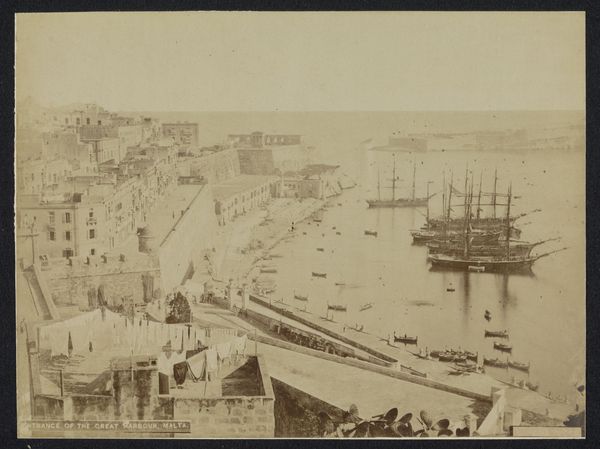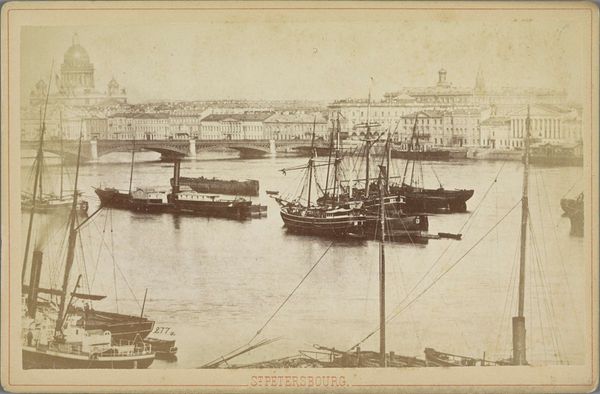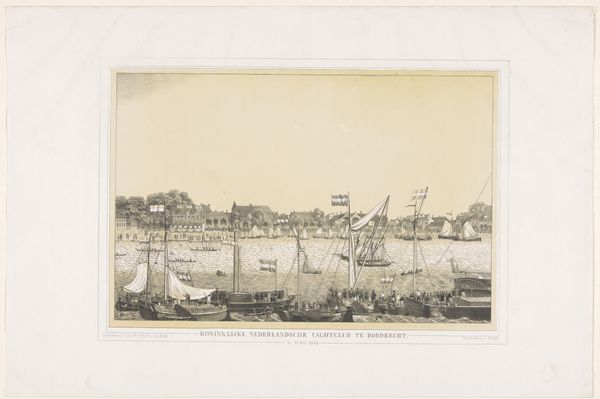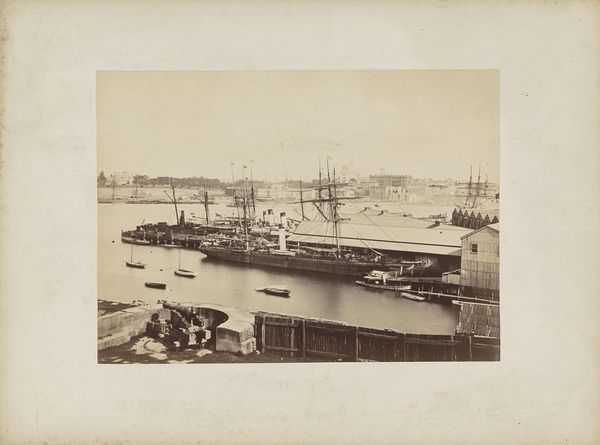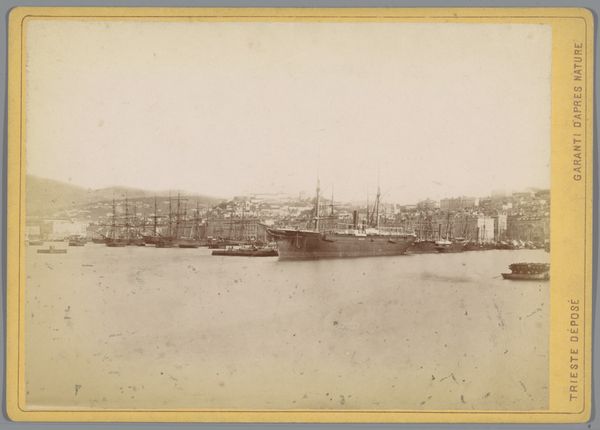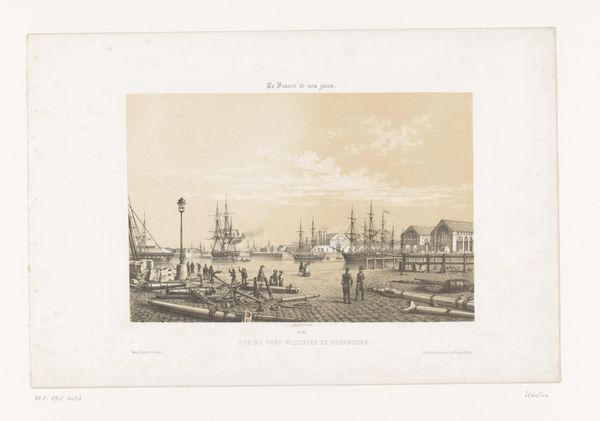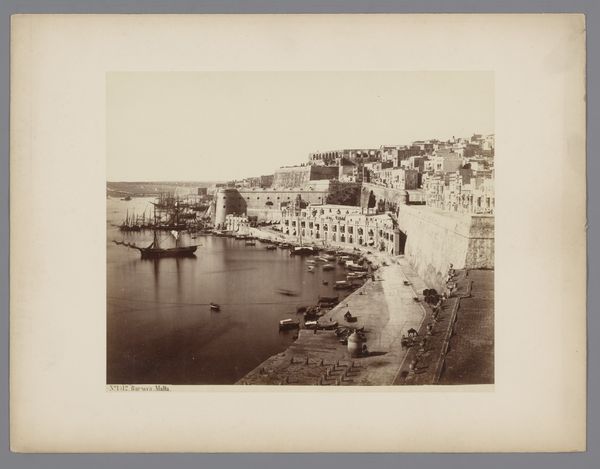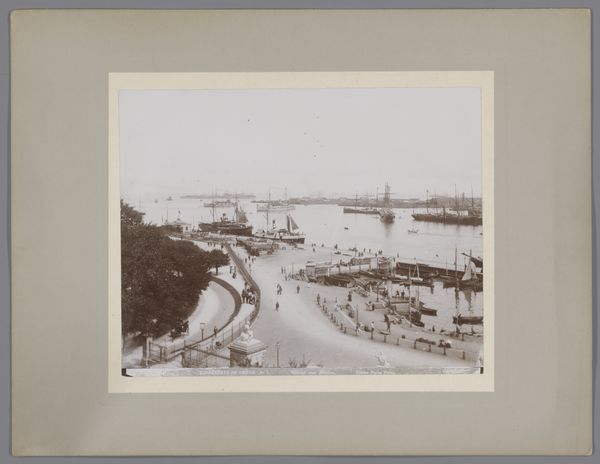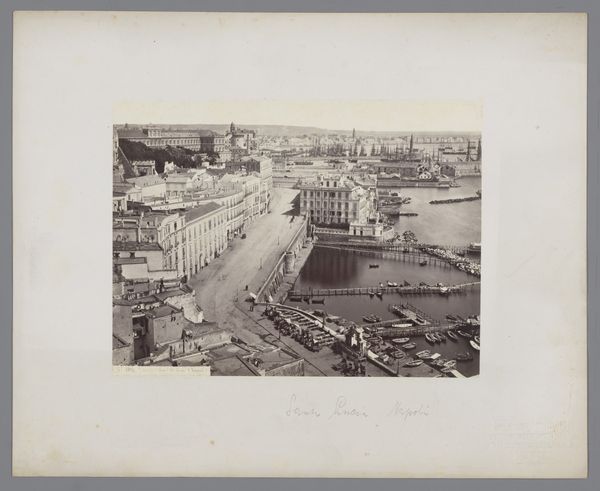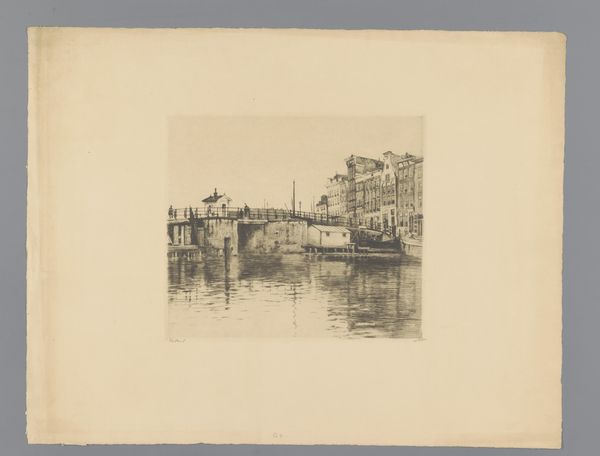
cardboard, albumen-print, paper, architecture
#
cardboard
#
albumen-print
#
pencil drawn
#
amateur sketch
#
aged paper
#
toned paper
#
light pencil work
#
16_19th-century
#
pencil sketch
#
paper
#
personal sketchbook
#
coloured pencil
#
watercolour illustration
#
italy
#
watercolor
#
architecture
#
building
Copyright: Public Domain
Editor: This is Carlo Naya's "Venice, The Bridge of Sighs," dating back to around 1865. It's an albumen print mounted on cardboard. There's a starkness to it, an almost industrial feel amidst the implied beauty of Venice. What draws your eye to this piece? Curator: What I notice is the albumen print itself, how that specific process was deployed and its cultural weight in mid-19th century tourism. It offered a tangible, reproducible, and arguably affordable way for individuals to "possess" Venice. Consider the labor involved: from preparing the glass plate to the developing and printing process and, in turn, think of who *didn't* have access to such practices or the final product. It’s crucial to consider these social dynamics of material production and consumption. Editor: So, beyond the depiction of Venice, the photograph as an object holds significant meaning? Curator: Precisely. Naya wasn’t simply documenting Venice; he was participating in a complex network of commerce and cultural exchange. The photograph is a commodity, designed for a specific market. We can examine how materials, such as the albumen and cardboard, reflect broader systems of production and trade and how these materials determined, for example, longevity of image or distribution opportunities for its consumers. What were these images really worth, and what was the embodied labour? Editor: That shifts my perspective entirely. I hadn't considered the photograph's own materiality as being so crucial. Curator: This material reality offers crucial insights into the culture surrounding Venetian imagery during that period. By focusing on production, distribution, and access, we gain a richer understanding than simply admiring the scenery. What do we lose and what do we gain? Editor: Definitely something to consider. I will be sure to consider all materials used for producing artworks during my visits to museums. Thanks so much!
Comments
stadelmuseum about 2 years ago
⋮
The so-called Bridge of Sighs led from the Doge’s Palace to the Prigioni Nuove, the “New Prison”. On their way across, convicts are said to have issued a sigh at the brief glimpse of freedom. The famous Venice landmark is one of the world’s most photographed bridges—and that was already the case in the nineteenth century. Countless photographers have adopted the same slightly oblique angle of view from the pedestrian bridge Ponte della Paglia opposite the south façade of the Bridge of Sighs. Their photos differ in the play of shadows—as determined by the respective position of the sun—, the tonal richness, and the number of gondolas. This perspective on the bridge has etched itself in the collective visualmemory and is still encountered in the social media today as the ideal angle for holiday pics.
Join the conversation
Join millions of artists and users on Artera today and experience the ultimate creative platform.
